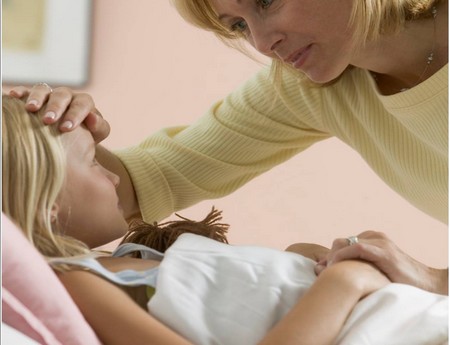You should know how to tell when a patient has a raised temperature (fever). You should also know what measures to take if it is raised. It is important to keep the temperature under control to promote recovery. If your general impression is that the patient is feverish, you can confirm this by taking the patient’s temperature. As a routine procedure, however, this is not valuable. Indeed, over the years much time has been spent in unnecessarily taking and recording the temperature, pulse and respiratory rate.
The feverish patient is hot, bright-eyed, flushed and probably sweating. He may complain of a headache, feel thirsty, have a dry mouth and foul breath. In caring for him your priorities are:
- to make him feel cooler
- to quench his thirst
- to clean his mouth
- to relieve his headache.
Dealing with a high temperature
There are several ways to make the patient cooler and more comfortable. A wash or bed bath with a change of nightclothes and bedlinen is refreshing. You can remove some blankets and give the patient a bed cradle under his coverings so that air circulates. You can also put an electric fan near the bed to move the air, as long as you do not chill the patient.
The feverish patient feels thirsty because he is sweating more than usual: sweat evaporates and cools the skin. Iced drinks are welcomed, especially sharp-flavoured ones. Frequent mouthwashes will moisten the mouth and freshen the breath.
As another result of the increased fluid loss, the patient may pass smaller quantities than usual of dark urine. If the fever lasts for more than a day or two he may also become constipated, partly because of fluid loss and partly because he is eating little. But most fevers are of short duration and small, light meals are adequate. Milky foods coat the tongue, so follow with a mouthwash.
If the patient complains of a headache, and it is severe, shade the patient’s eyes from direct light and encourage him to rest quietly. A cold compress may be soothing, perhaps with a few drops of eau-de-cologne added to the water.
